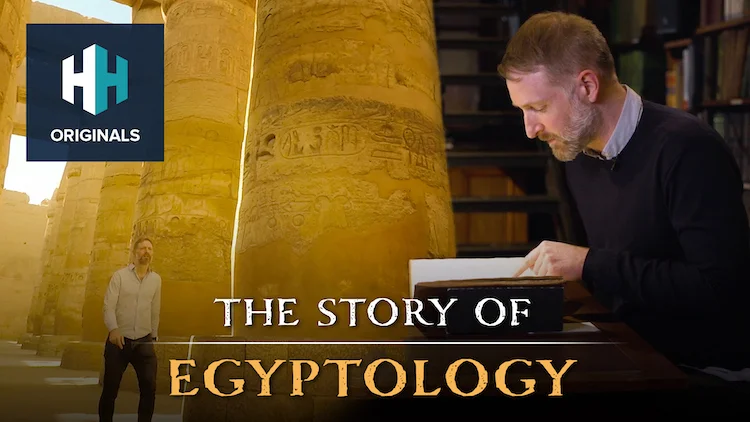

Also known as Amenhotep IV, Akhenaten was Pharaoh of ancient Egypt of the 18th dynasty between 1353-1336 BC. In his two or so decades on the throne, he fundamentally altered Egyptian religion, ushered in new artistic and architectural styles, tried to remove the names and images of some of Egypt’s traditional gods and moved Egypt’s capital city to a previously unoccupied site.
In the years after his death, his successors widely undid the changes he made, and lambasted Akhenaten as ‘the enemy’ or ‘that criminal’. However, also due to the major changes he made during his reign, he has been described as ‘history’s first individual’.
Here are 10 facts about one of ancient Egypt’s most controversial rulers, Pharaoh Akhenaten.
1. He wasn’t meant to be pharaoh
Akhenaten was born Amenhotep, the younger son of pharaoh Amenhotep III and his principal wife Tiye. He had four or five sisters as well as an older brother, the crown prince Thutmose, who was recognised as Amenhotep III’s heir. However, when Thutmose died, it meant that Akhenaten was next in line for Egypt’s throne.

Statue of Amenhotep III, British Museum
Image Credit: A. Parrot, Public domain, via Wikimedia Commons
2. He was married to Nefertiti
Though the exact timing of their marriage is unknown, Amenhotep IV seems to have married the chief queen of his reign, Nefertiti, at or shortly after the time of his accession. By all accounts, they had a very loving marriage and Akhenaten treated Nefertiti closer to an equal, which was highly unusual.
3. He introduced a new religion
Akhenaten is best known for introducing a new religion that centred on the Aten. The god figure was generally represented as a solar disk which was the essence of light produced by the sun, and the prime mover of life. While the Aten is said to have created the world for men, it seems that the ultimate goal of creation is the king himself. Indeed, Akhenaten is said to have enjoyed a privileged connection with the god. In his fifth year as pharaoh, he changed his name from Amenhotep to Akhenaten, meaning ‘effective for Aten’.
4. He attacked existing Egyptian gods
At around the same time that he began to introduce a new religion, Akhenaten began a program to erase the name and image of the Theban god Amon from all monuments. Other gods were also attacked, such as Amon’s consort, Mut. This created widespread destruction in many Egyptian temples.

Pharaoh Akhenaten (center) and his family worshiping the Aten, with characteristic rays seen emanating from the solar disk
Image Credit: Egyptian Museum, Public domain, via Wikimedia Commons
5. He changed the artistic style of the age
Akhenaten imposing a new religion manifested itself in other areas of Egyptian culture, such as art. The first works he commissioned followed a traditional Theban style which had been employed by nearly every 18th dynasty pharaoh before him. However, royal art began to reflect the concepts of Atenism.
The most striking changes were in artistic depictions of the royal family; heads became larger and were supported by thin, elongated necks, they were all depicted as more androgynous, while their faces had large lips, long noses, squinting eyes and bodies with narrow shoulders and waists, concave torsos and large thighs.
 Watch Now
Watch Now6. He created a new capital city elsewhere
Akhenaten moved Egypt’s capital from Thebes to a brand new site named Akhetaten, which translates to ‘the place where Aten becomes effective’. Akhenaten claimed that the location had been chosen because Aten manifested itself for the first time on the site. It also seems that the location was chosen because the cliffs that framed the city resembled the Axt symbol, meaning ‘horizon’. The city was built quickly.
However, it was not to last, since it was abandoned just three years into Akhenaten’s son Tutankhamun’s reign.
7. It is unclear whether his body has ever been discovered
It’s unclear precisely why or when Akhenaten died; however, it’s likely he died in the 17th year of his reign. It’s also unclear whether his body has ever been found, especially since the royal tomb intended for Akhenaten at Akhetaten did not contain a royal burial. Many scholars have suggested that a skeleton found in the Valley of the Kings could belong to the pharaoh.

Akhenaten and Nefertiti. Louvre Museum, Paris
Image Credit: Rama, CC BY-SA 3.0 FR
8. He was succeeded by Tutankhamun
Tutankhamun was probably Akhenaten’s son. He succeeded his father from the age of around eight or nine in c. 1332 BC and ruled until 1323 BC. Most famous for his lavish tomb which was discovered in 1922, Tutankhamun undid much of his father’s work after his death, restoring traditional Egyptian religion, art, temples and shrines, the latter of which had been severely damaged.
9. Successive pharaohs named him ‘the enemy’ or ‘that criminal’
After Akhenaten’s death, the culture shift away from traditional religion was reversed. Monuments were dismantled, statues were destroyed and his name was even excluded from lists of rulers drawn up by later pharaohs. He was even referred to as ‘that criminal’ or ‘the enemy’ in later archival records.
10. He has been described as ‘history’s first individual’
It is clear that the major tenets of the Aten religion and changes in artistic style were personally initiated by Akhenaten himself, rather than a general policy of the time. Though the Aten cult quickly disappeared, many of Akhenaten’s stylistic inventions and large scale compositions were later incorporated into future works, and as a result, he has been dubbed ‘history’s first individual’.













